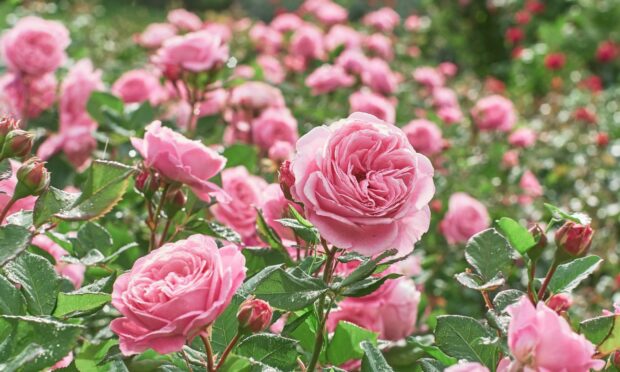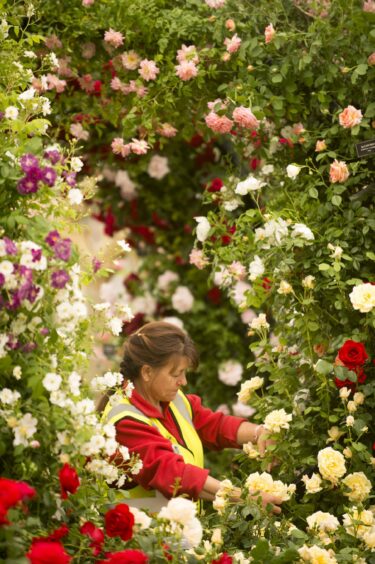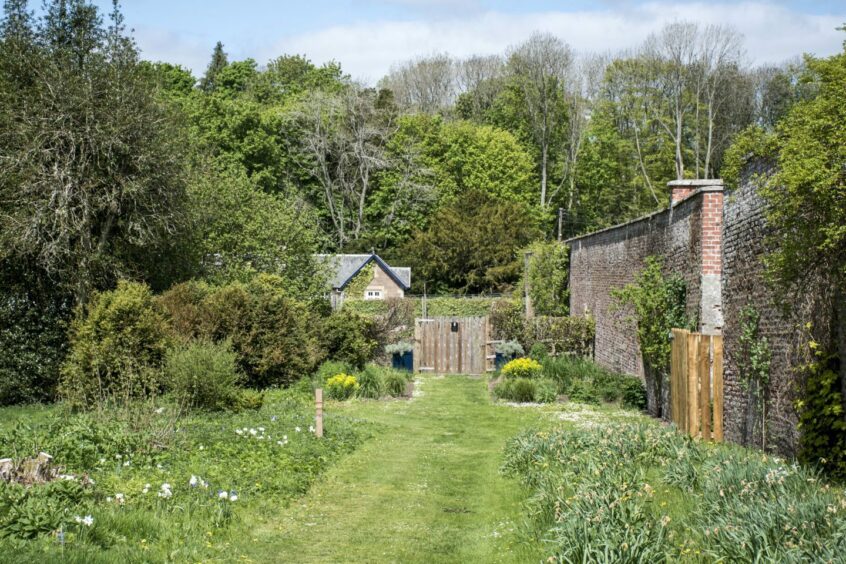Up until recently, I’ve had a standoff-ish relationship with roses.
I admired them, they are of course one of if not THE nations favourite plant, but I just felt I never seemed to have any luck with them.
The specimens climbing walls or in rose borders I had worked with in the gardens I’d previously worked in were never the best of plants, poor in health needing regular spraying to keep pests and diseases away for them not really to look any better.
Felt like I was missing out
It put me off growing them.
Although I focused on shrubs, herbaceous perennials and bulbs to make attractive borders I still felt I was missing out.
Especially when I looked at pictures of perfect rose plants in magazines and reading the words of the owner boasting how “gorgeous the scent form their pride and joy is, filling the air of the whole garden.” Bah!
That’s why I was relieved when I came across this article that gave a reasoning to the poor health cycle of roses, giving me hope that I could feature one or two in my garden again.
Identifying rose plant diseases
When roses suffer from fungal diseases like black spot or powdery mildew, the leaves look unsightly and either need picked off or fall off themselves, leaving bare stems that look unattractive or turn brown as they dieback.
Previously I couldn’t understand why this was happening as I felt as a gardener I was doing everything right.
I cleared away all infected leaves sticking in the bin and not the compost heap that could help spread diseases.
I regularly pruned every March removing bad stems and encouraging growth to create an open shaped plant that air can blow through keeping the nasties away.
For the same reason I gave plenty room between plantings and kept the ground weed free.
Finally I would feed and mulch the ground each spring.
What I didn’t know was that these kind of diseases that affect roses mutate over time.
So although we pick varieties that are bred to have a certain resistance, there’s every chance a new strain will come along that will manage to penetrate these defences.
Developing relationship with roses
Now that I understand that it’s not all my fault and there is a good chance I may only get a certain amount of years from my rose.
That was good enough for me to develop a relationship with them again.
I generally don’t use fertilisers in the garden to grow the best plants I possibly can preferring instead to ensure my soil is healthy and in the best condition with regular mulching.
However, I am making this one exception for roses applying an organic rose fertiliser at the beginning of April and again now at the start of June.
I’m also following the advice from the experts at the Rose Society who I’m confident know their stuff.
From the start of May I have also started a fortnightly liquid feeding programme applying as a root drench and foliage spray.
The thinking is if I can grow strong and healthy plants they will have the strength to fight off any diseases.
Never too late to start regime
It’s not too late to start this regime yourself if your own garden is blessed with a rose or two.
I have bad memories of the rose borders I used to work in.
The trouble is when you are only growing the one variety is that if one of them is ill then the chances are the rest will be the same and the whole border looks awful.
To cover all my bases I’m deciding this time to grow roses with a selection of perennials which will also help to extend the growing season.
Which varieties to grow?
The colour of roses I’m growing are apricot from the varieties ‘Grace’ and ‘Emily Brontë’ to pinks from ‘Lady Salisbury and ‘Eustacia Vye’, on top of their lush green foliage the flower colour from the perennials will follow the same line.
I’m keen to see how the flat flower heads of Achillea ‘Salmon Beauty’ that sit on top of soft fern-like foliage will combine with roses.
A classic plant partner for roses is Geranium.
I’m using the variety ‘Mavis Simpson’ that has pink flowers.
It has a light growth around 1m high and will sit nicely under these shrub roses that grow around 1.2m, without crowding them out.
To bring a touch of height to the border at this time of year I have the absolutely stunning foxglove ‘Sutton’s Apricot’ which as you’ve worked out has funnels of apricot coloured flowers.
Just now these are floating perfectly above the new growth still low from the ground after their winter pruning.
A calculated risk!
Finally, a bit of a risk but every new border should always contain such a plant to make it exciting.
I’m throwing in an Eupatorium rugosum that has ‘Chocolate’ coloured foliage.
Ach, it’s a calculated risk as I’m confident will look nice with the apricot and pink colours of rose flowers.
But I also feel in a border of green it’s nice to have a different coloured foliage to break up the bank of green.




Conversation